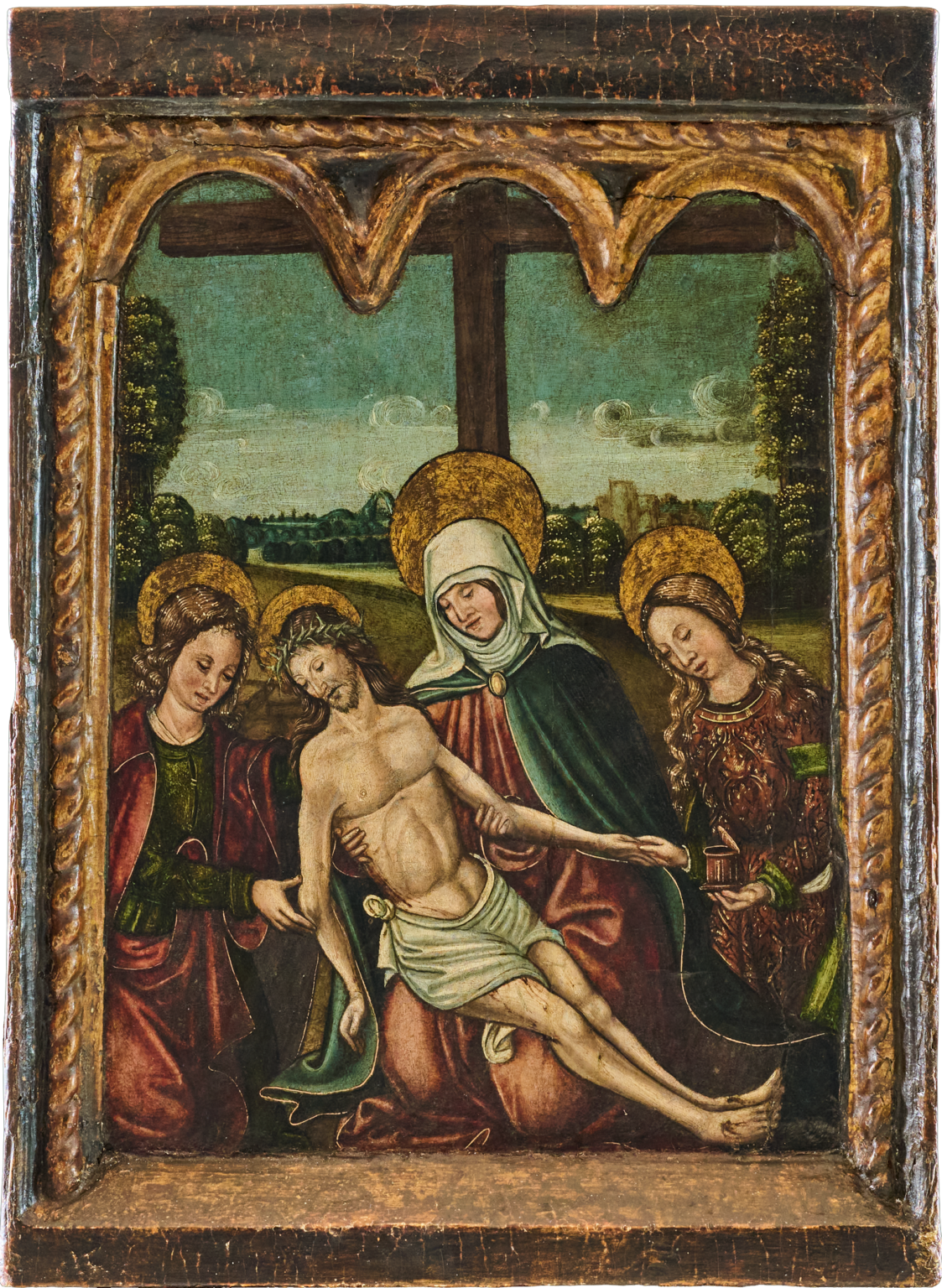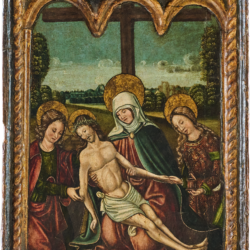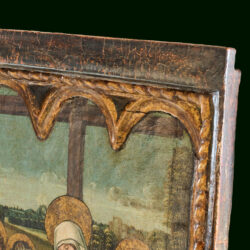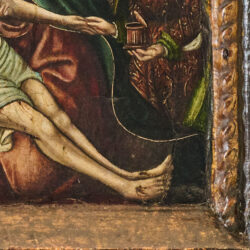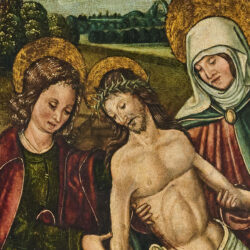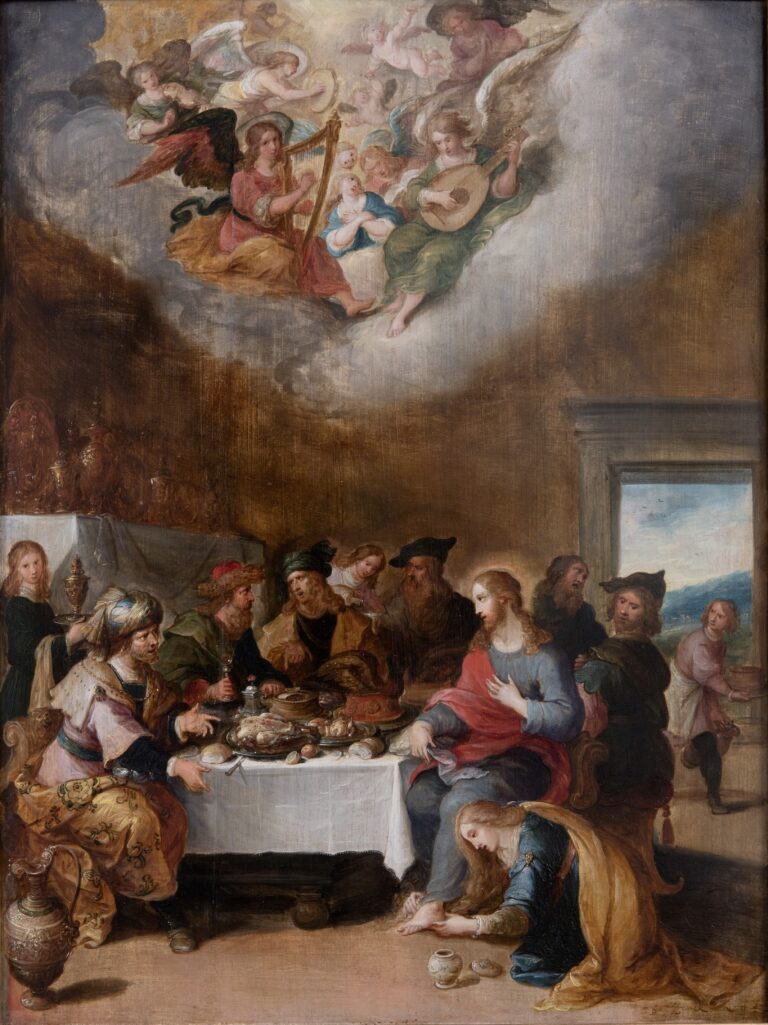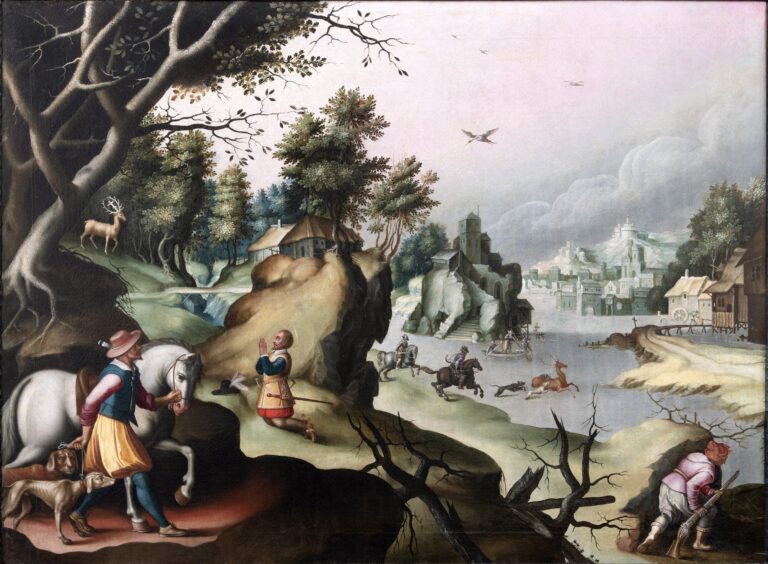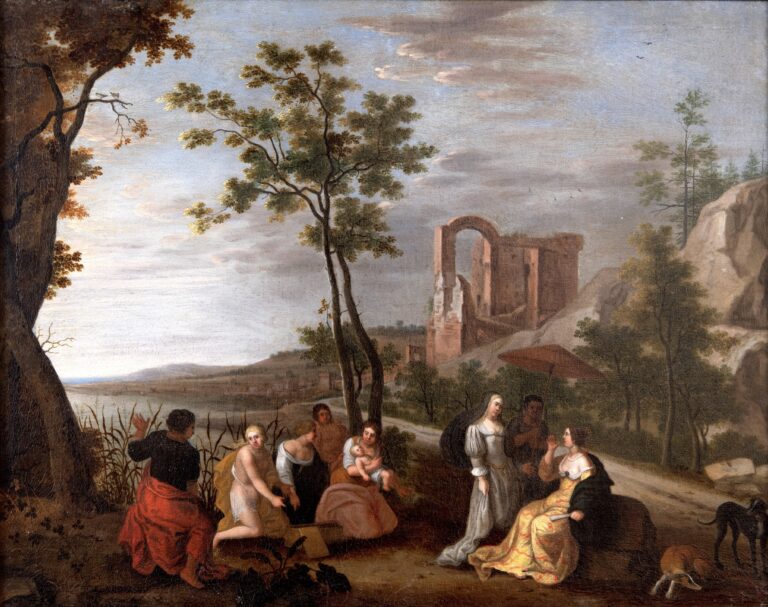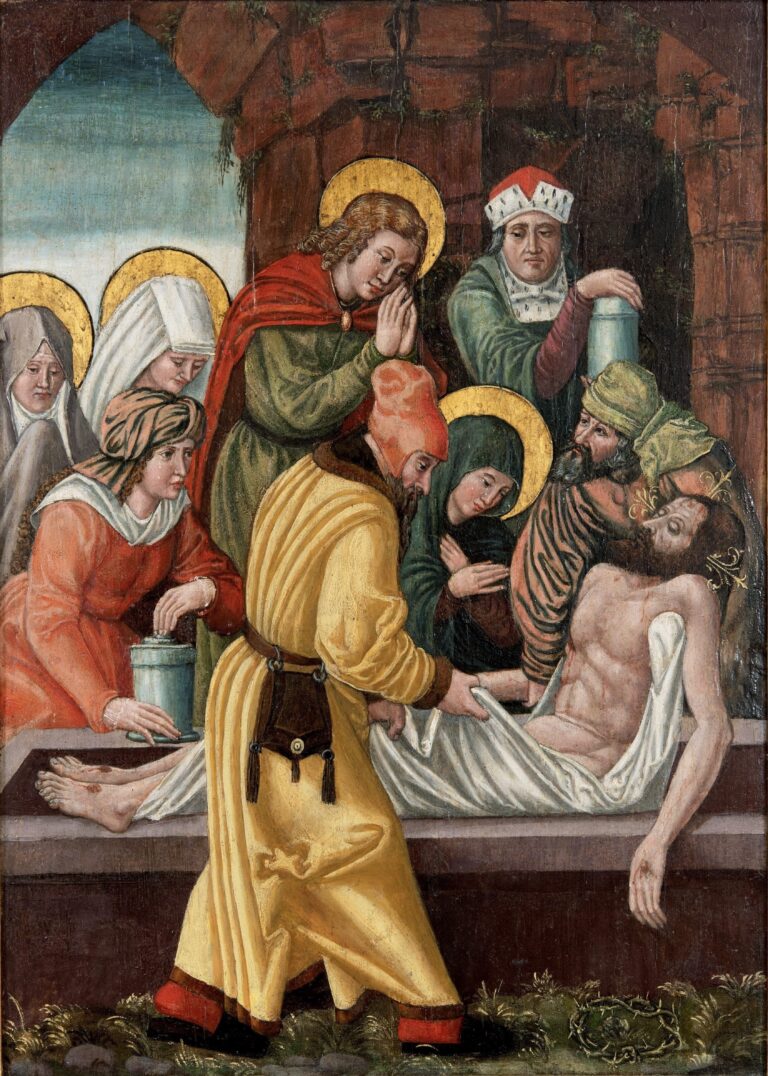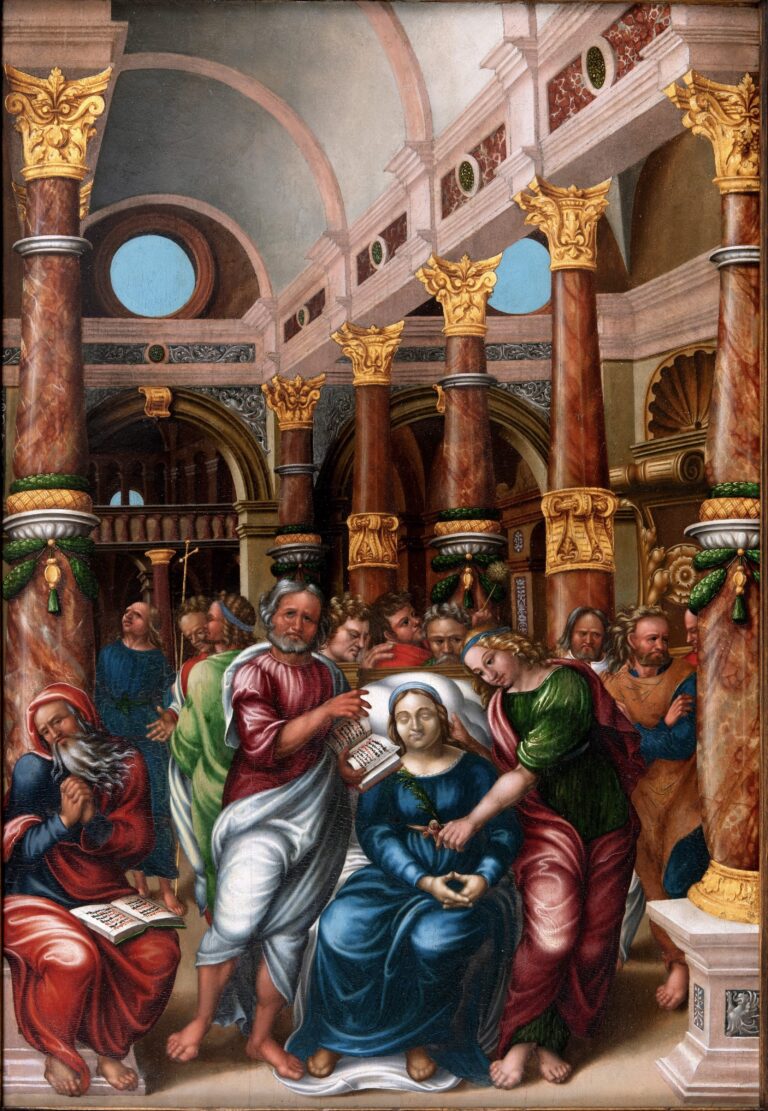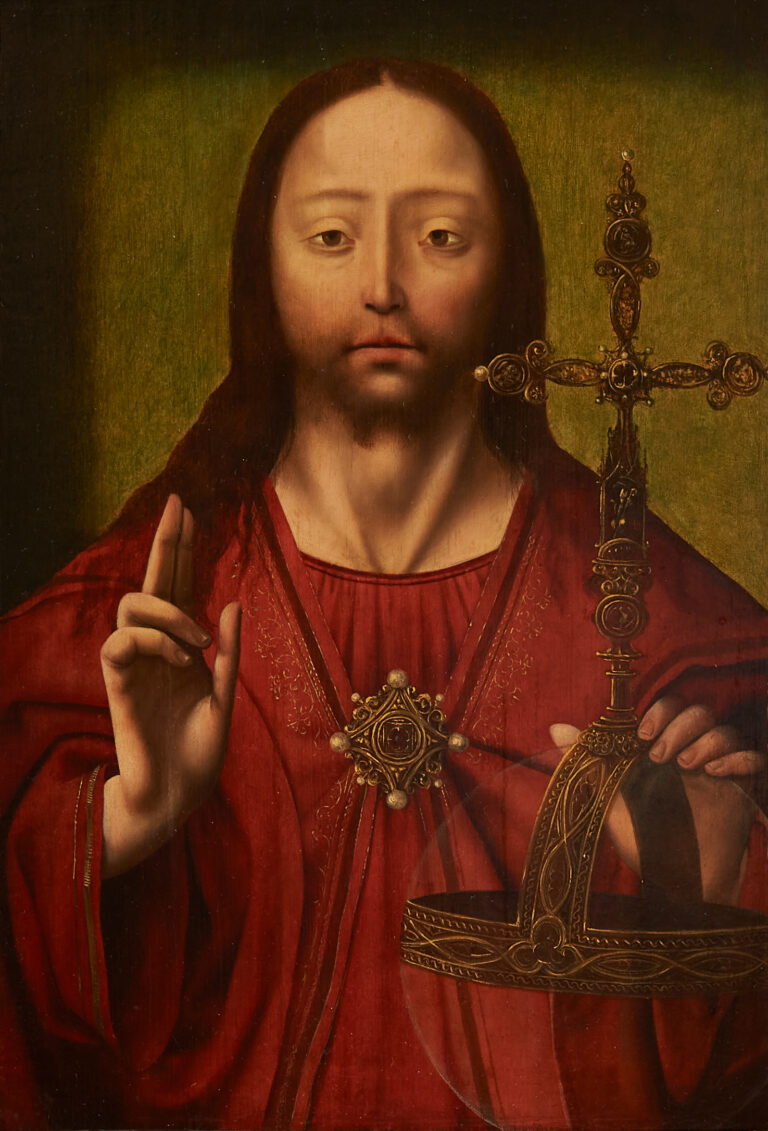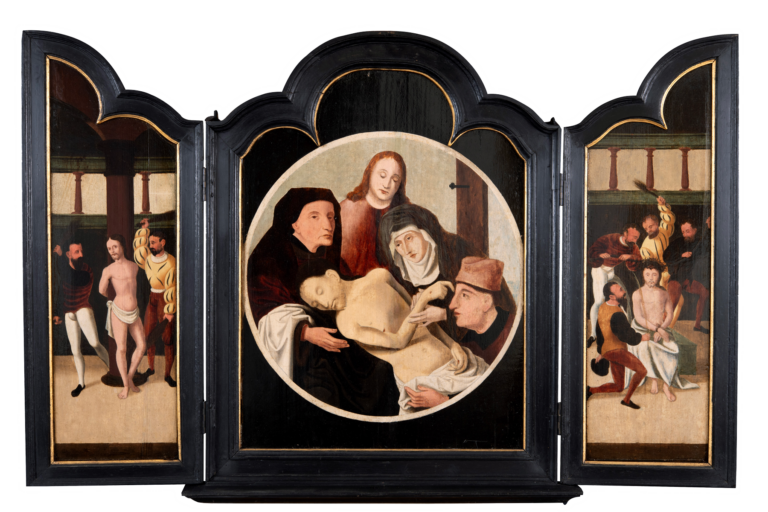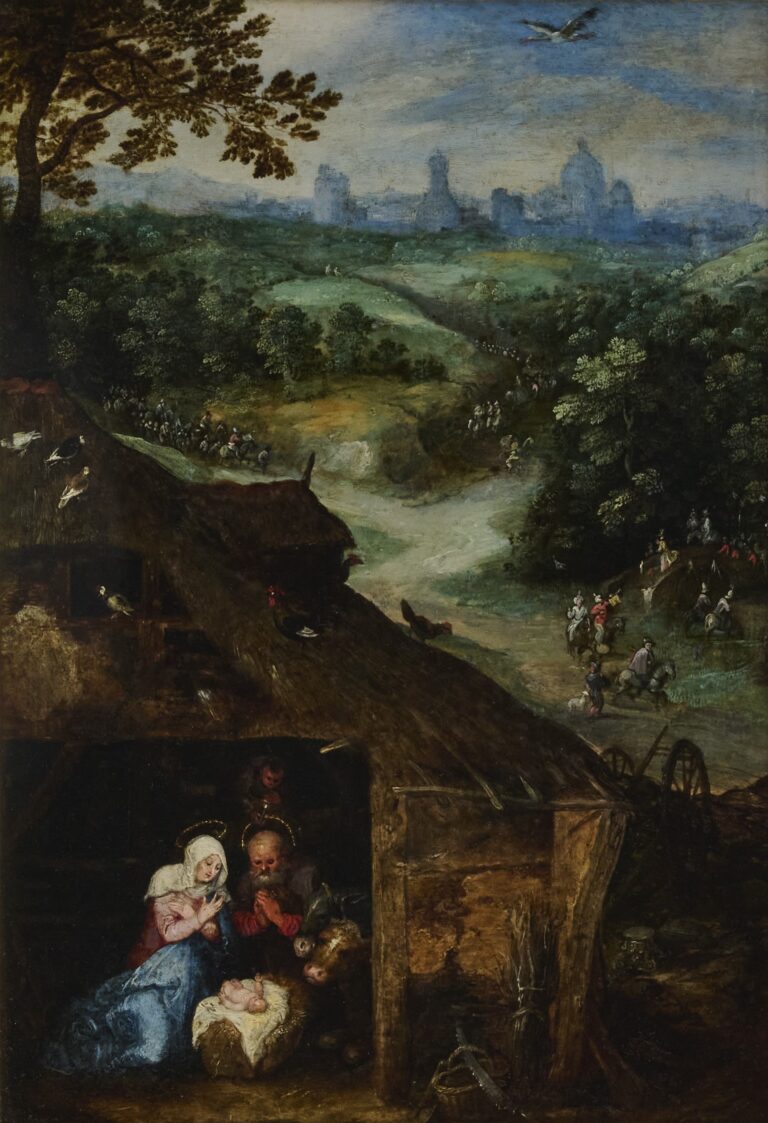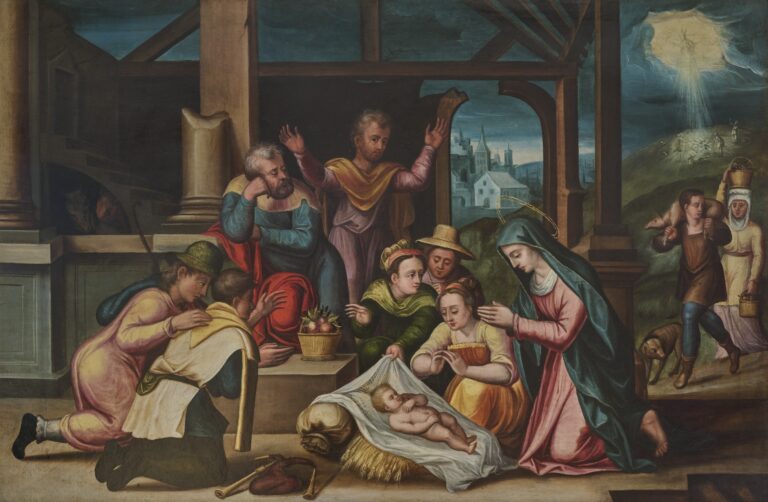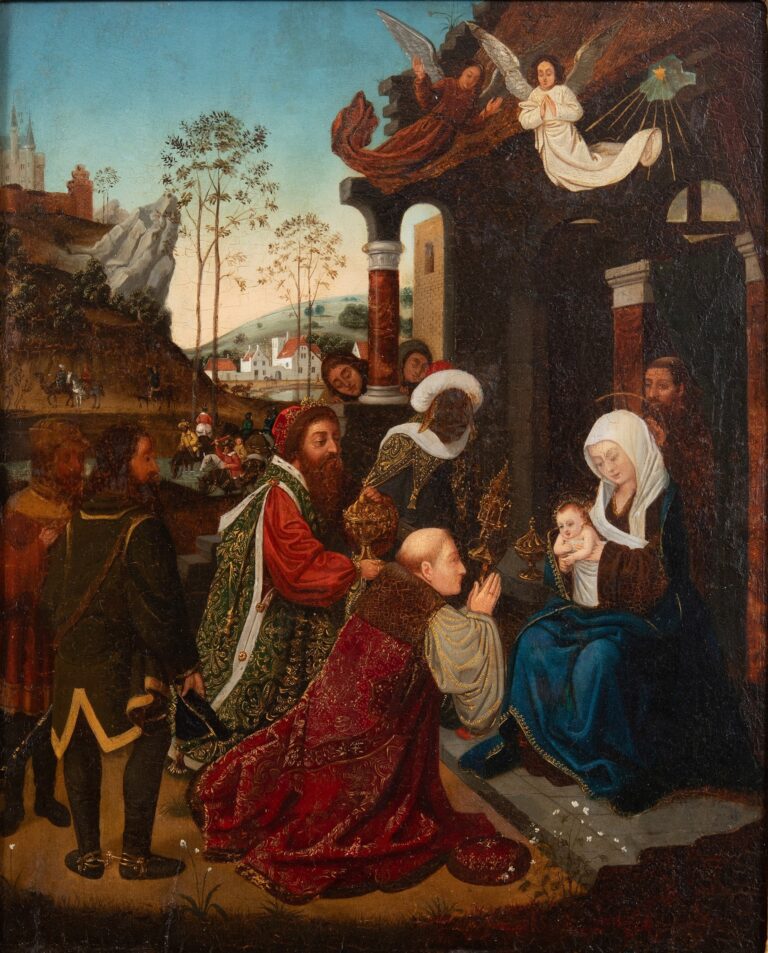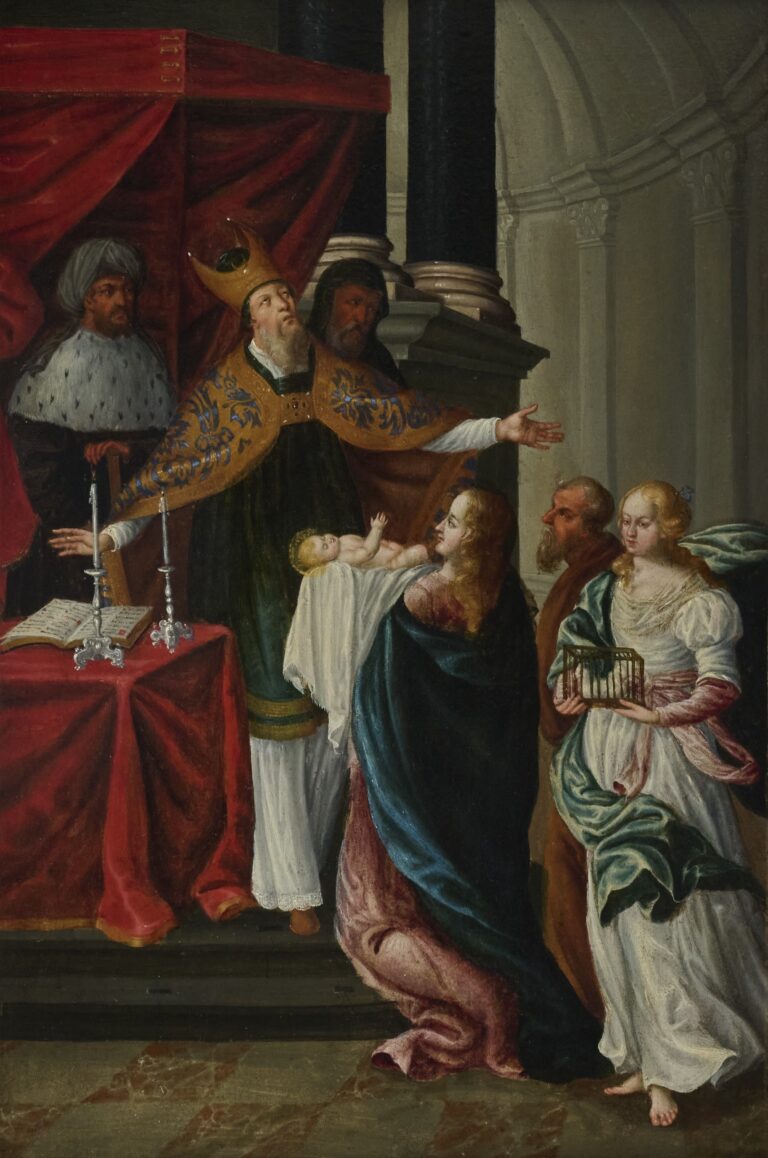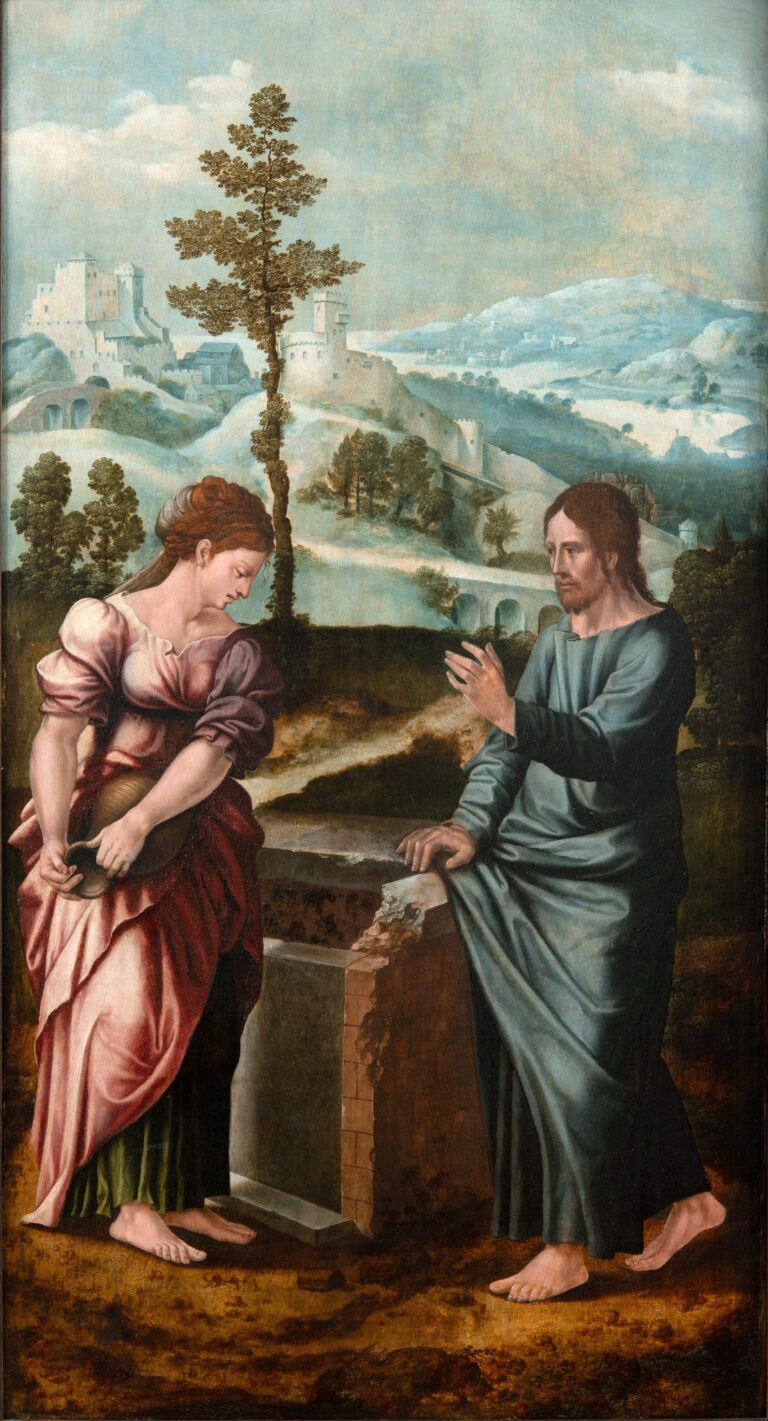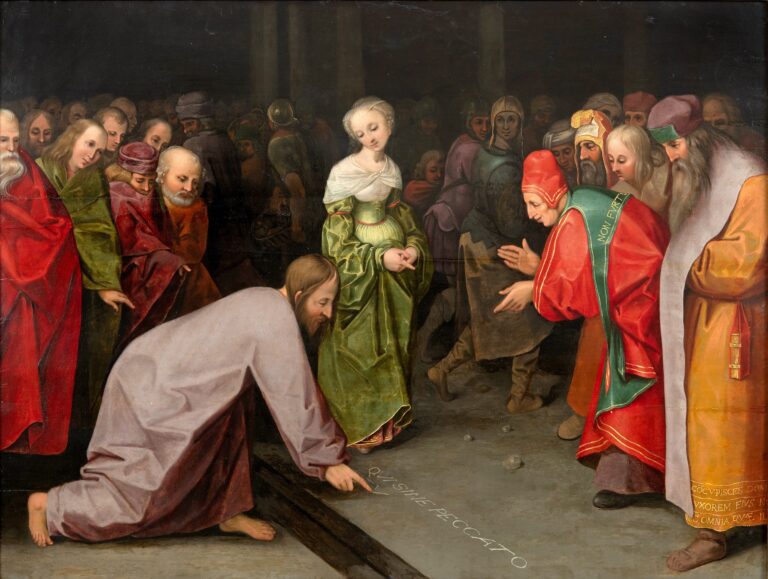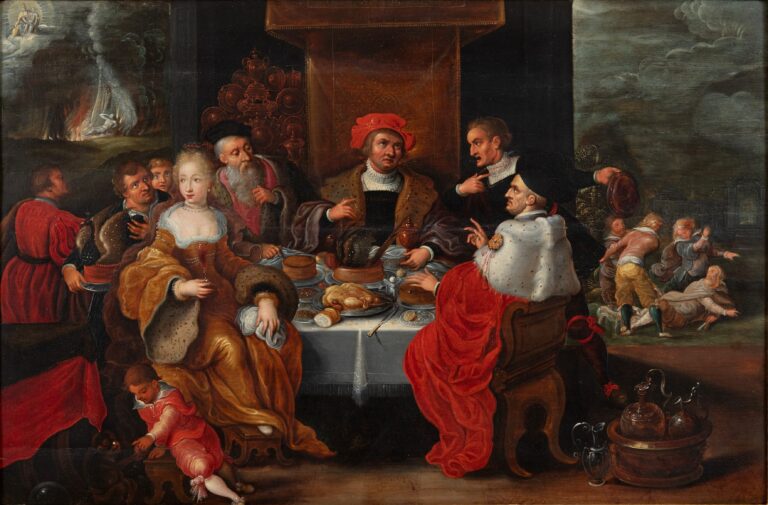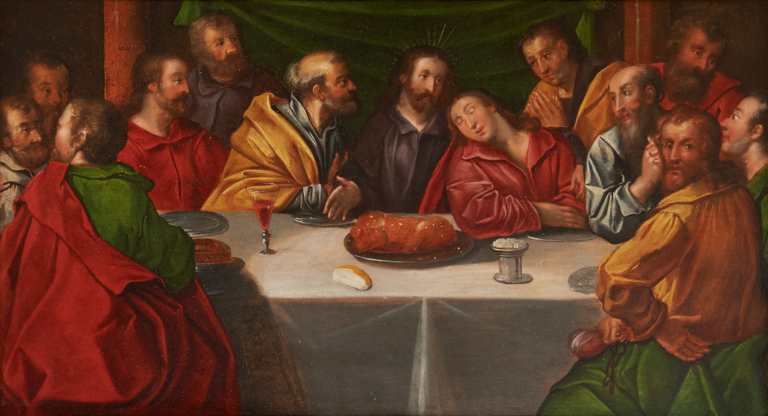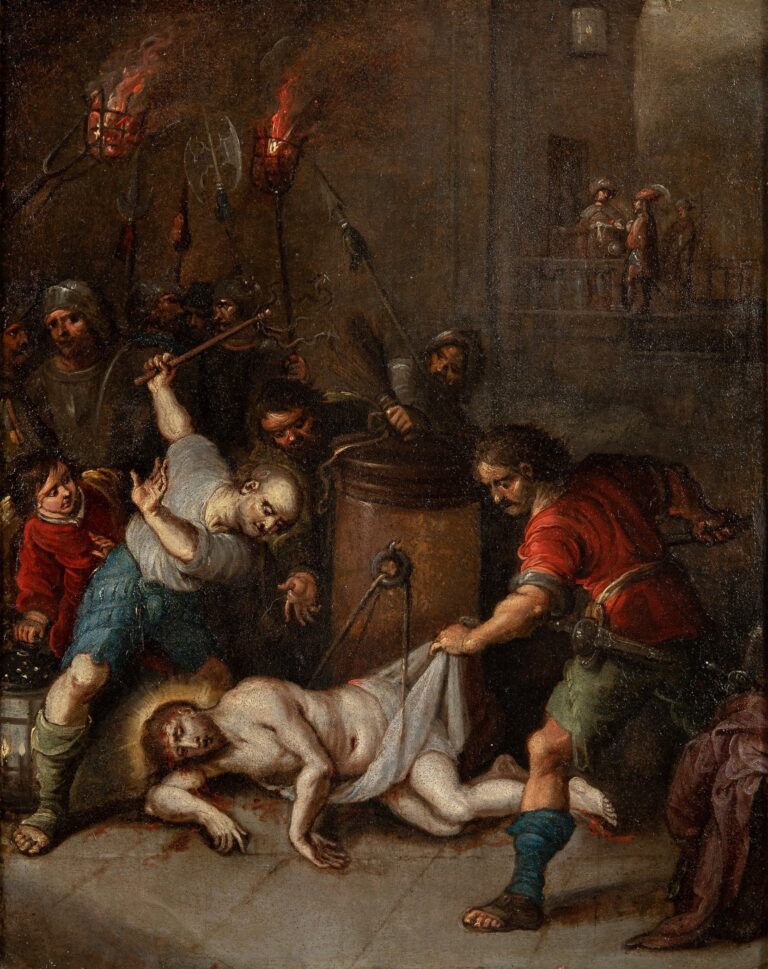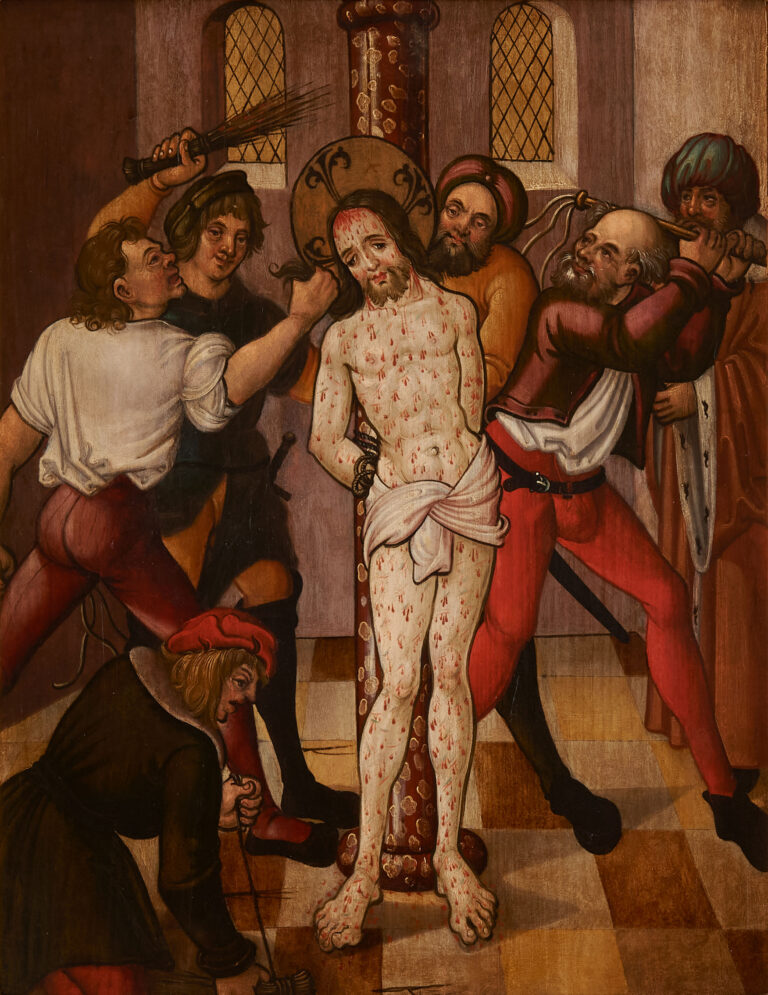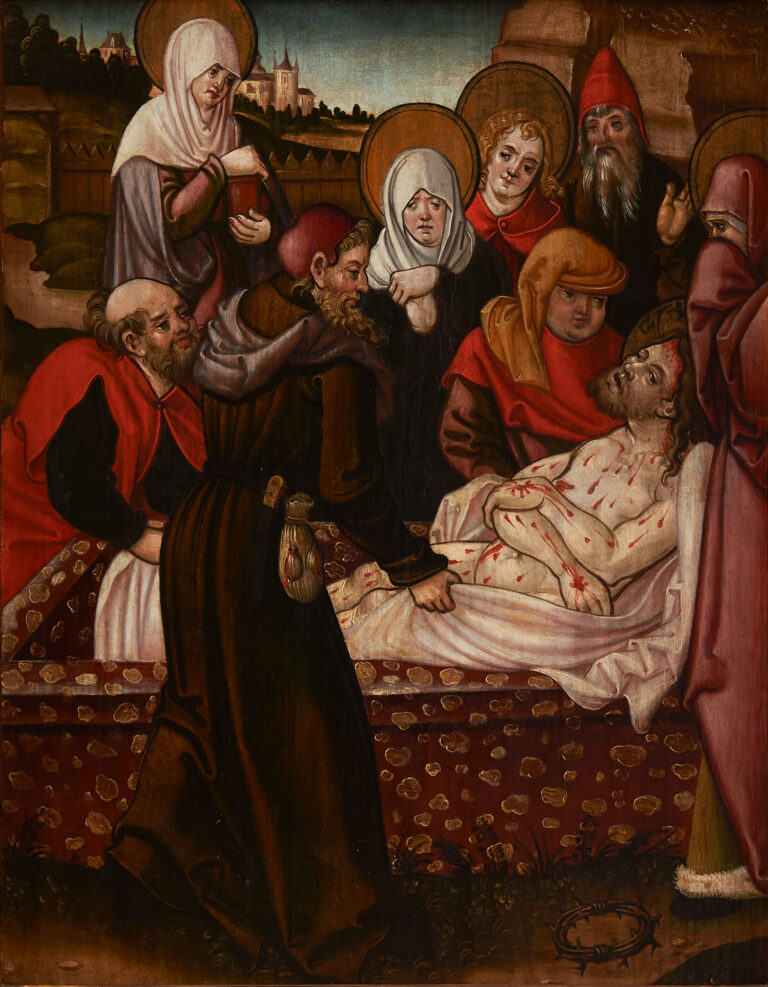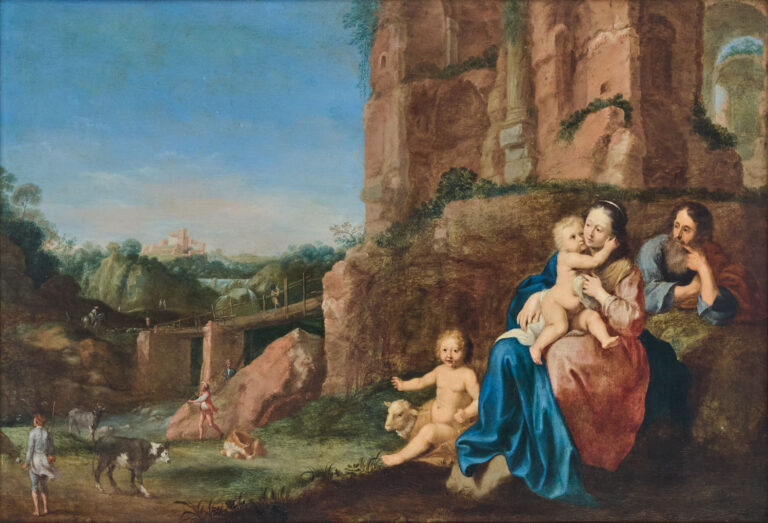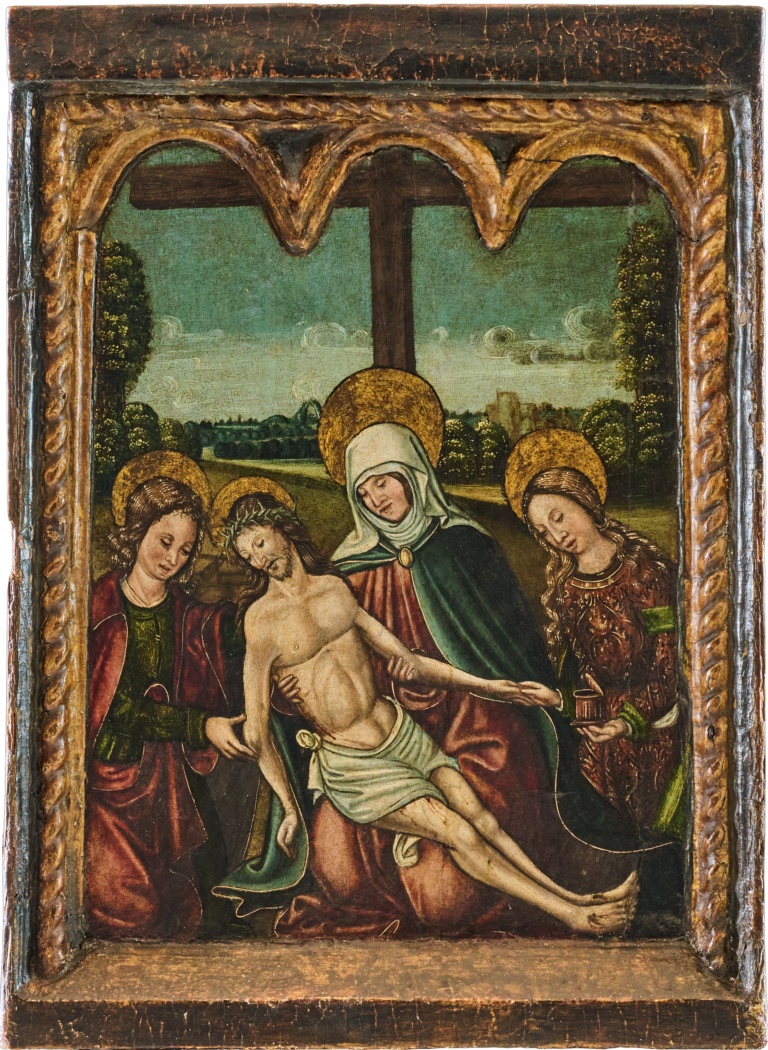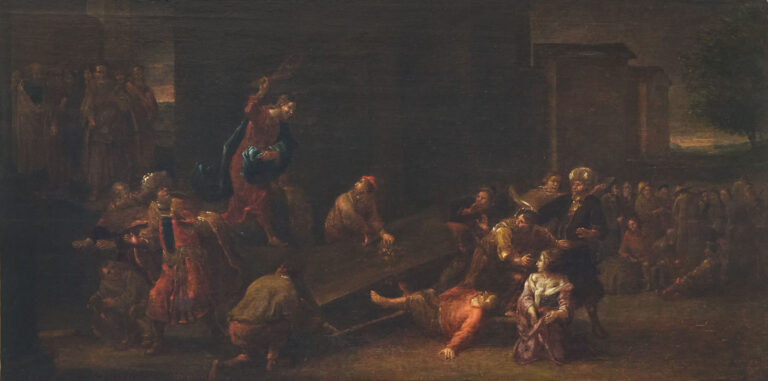Home » Collection » The Deposition from the Cross
The Deposition from the Cross
Catalan School, 1520 / 1530
The crucifixion is the pre-eminent image not only in Christendom but in the whole of Western Civilisation. Our painting is by an unknown Catalan artist, and dates to 1520 or 1530. It depicts the moment just after Christ has been taken down from the Cross.
The artistic tradition around the Crucifixion represents two different scenes immediately after Christ’s death: the Deposition from the Cross and the Lamentation over the Dead Christ. We have classified our painting as a Deposition owing to the sense of motion the artist has brushed into the scene, but it could as easily be described as a Lamentation.
Three women tend to Christ’s body. His mother Mary is in the centre, flanked by Mary Magdalene and (probably) by Mary Mother of James the Lesser and Joses; this third Mary is mentioned in John’s account of the crucifixion (John 15:40).
The artist has filled the scene with motion and emotion. Mary is not simply holding her dead son; she appears to be laying him down, his body having just been removed from the Cross. Mary is assisted by the woman on her right, who is helping guide Christ’s body to the ground. The third woman is applying oil to Christ’s hand, perhaps the mixture of myrrh and aloes mentioned in Mark’s Gospel.
The three women wear expressions of solemn sorrow. We feel Mary’s grief as she holds her son just above the wound on his side, where his body had been pierced by a Centurian’s lance moments before.
Our painting is set within an integral frame decorated with braided wood along three sides and three arches along its top. The painting was likely used for private devotion, perhaps in the home of an early 16th Century Catalan merchant. Five centuries later it retains its power to move us.
Provenance: South German Private Collection
Price: £7,850 excl. UK VAT
Medium
Oil on Panel, with an integral frame
Painted Surface
41 x 30 cm (16.1 x 11.8 inches)
Framed
53 x 38.5 cm (20.9 x 15.2 inches). Frame depth: 4.5 cm (1.75 inches)
Make an enquiry about this piece
Share this piece
Home » Collection » The Deposition from the Cross
